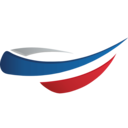
Calafia Airlines (A7) seat map listing

Calafia Airlines is a Mexican regional airline founded in 1993. It is headquartered at Cabo San Lucas International Airport. Calafia Airlines main hub is Cabo San Lucas. The airline operates scheduled flights to the Mexican Pacific Coast and the Baja California Peninsula. In addition, Calafia Airlines also operates charter flights and tours. The company's fleet consists of six aircraft (Embraer EMB 120ER Brasilia (4 planes), Embraer ERJ 145ER (2 planes)) that fly to 20 destinations.
Seatmaps.com has created and compiled a thorough list of seatmaps of aircrafts that Calafia Airlines operates. Choose an aircraft and click on it to see the seatmaps and all details associated with your seat.
Calafia Airlines

Fleet
Embraer
- Embraer ERJ1451 type
Check in rules
Registration can be done online (via the website or mobile app) or at the airport. Online check-in begins 24 hours before departure and ends two hours before departure. The registration desks open three hours before departure and close 60 minutes before departure.
Calafia Airlines Check-in rulesBaggage
Passengers are allowed to take on board hand luggage with a maximum size of 55 cm x 40 m x 25 cm and weighing up to 15 kg. The maximum weight of checked baggage is 25 kg, size - up to 158 cm (sum of all dimensions).
Calafia Airlines Baggage rulesUnaccompanied minors
The airline provides an escort service for minors. Children over the age of five can travel alone. For children 5-18 years old, a minors' escort service is compulsory.
Unaccompanied minors in Calafia AirlinesInfants
Children under two years of age are considered infants. Children younger than seven days old are not allowed on the flight. Infants do not need a separate seat. They may travel on the lap of an accompanying adult. One adult may travel with two infants. In this case you need to buy one seat for one infant, and the other can be on the adult's lap.
Calafia Airlines Infants policyPets
The airline allows pets to be transported in the cabin. Animals under 8 weeks of age will not be transported. Containers must be the actual size of the animal, properly ventilated (for the animal's well-being), and properly labeled for identification.
Flying with pets on Calafia Airlines
Seat maps on other airlines
The same alliance
- Air Algerie
- Air Borealis
- Air Macau
- Air North
- Air Rarotonga
- Air Seychelles
- Albatros Airlines
- ASKY Airlines
- ASL Airlines France
- Badr Airlines
- Cabo Verde Airlines
- Conviasa
- Eastern Australia Airlines
- EcoJet - Linea Aerea EcoJet
- Elite Airways
- Fly Gangwon
- Iran Aseman Airlines
- JetSMART Argentina
- LEAV Aviation
- Nova Airways
- RAF-Avia
- Red Wings Airlines
- Royal Brunei Airlines
- Spring Airlines
- Tassili Airlines
- Tez Jet Airlines
- Tibet Airlines
- Tsaradia
- West Air